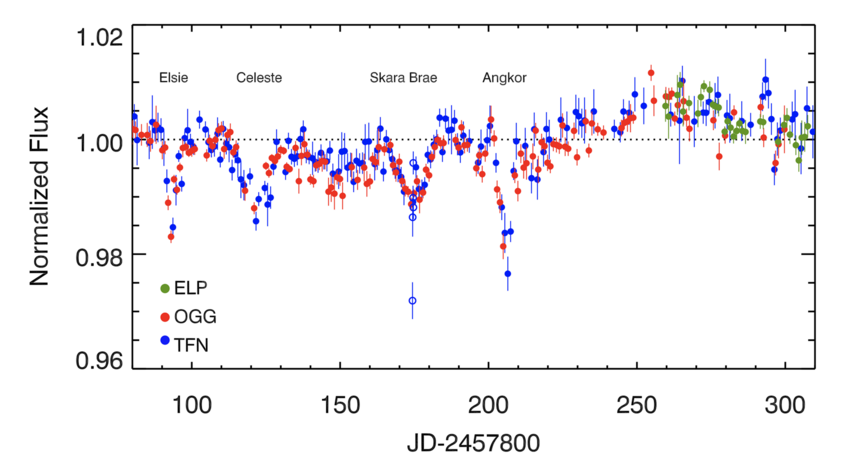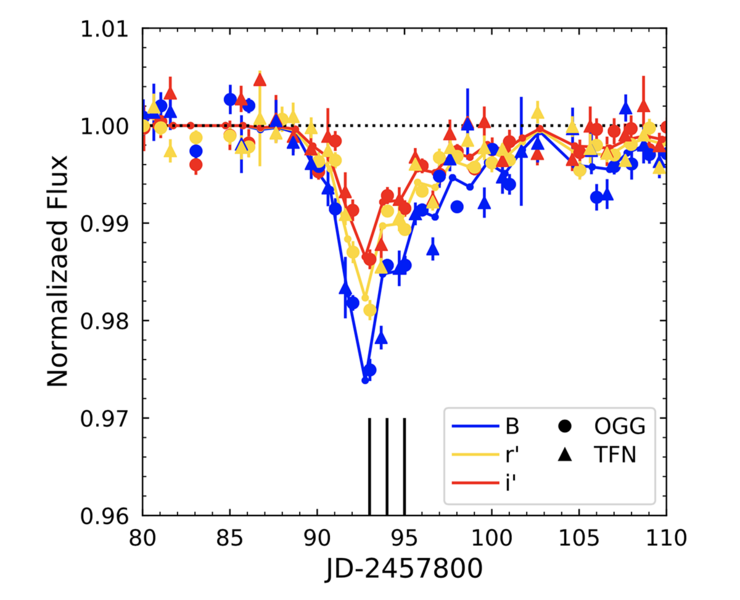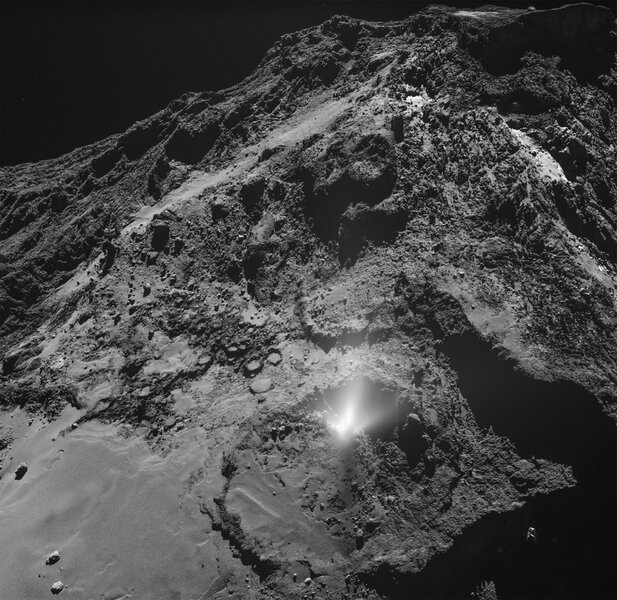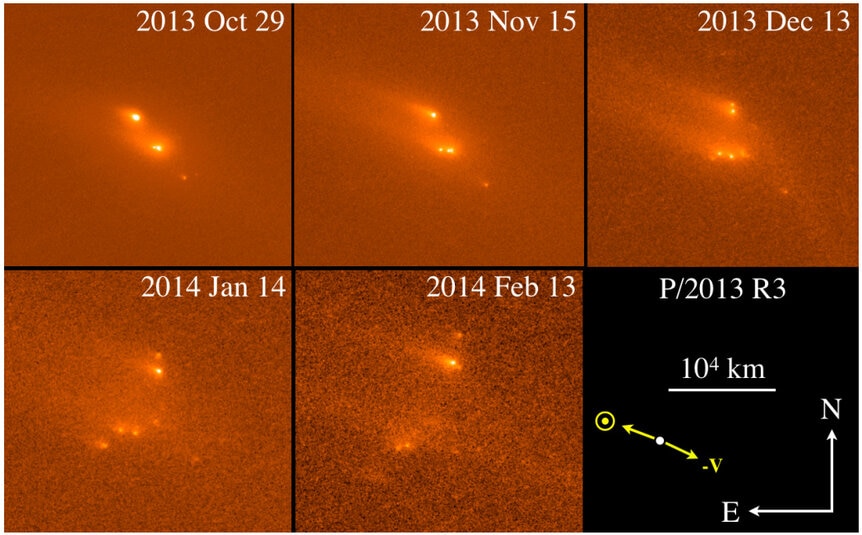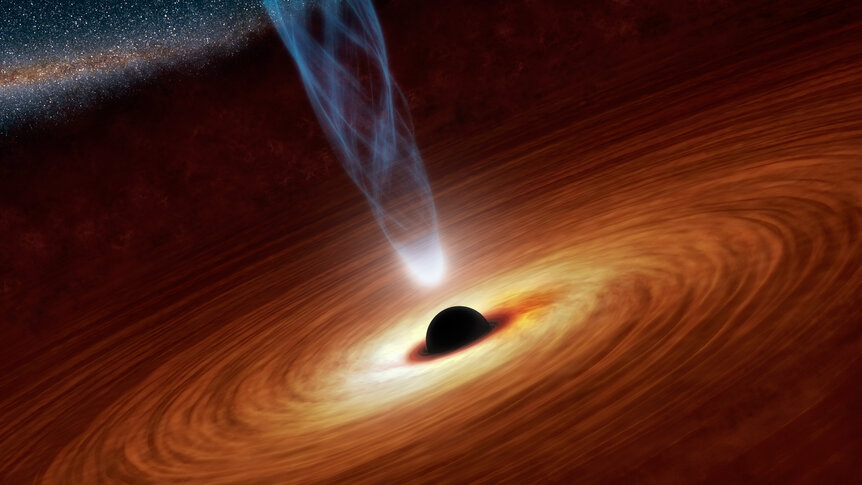Create a free profile to get unlimited access to exclusive videos, sweepstakes, and more!
Tabby’s Star: Sorry, folks, but it *really* isn't aliens
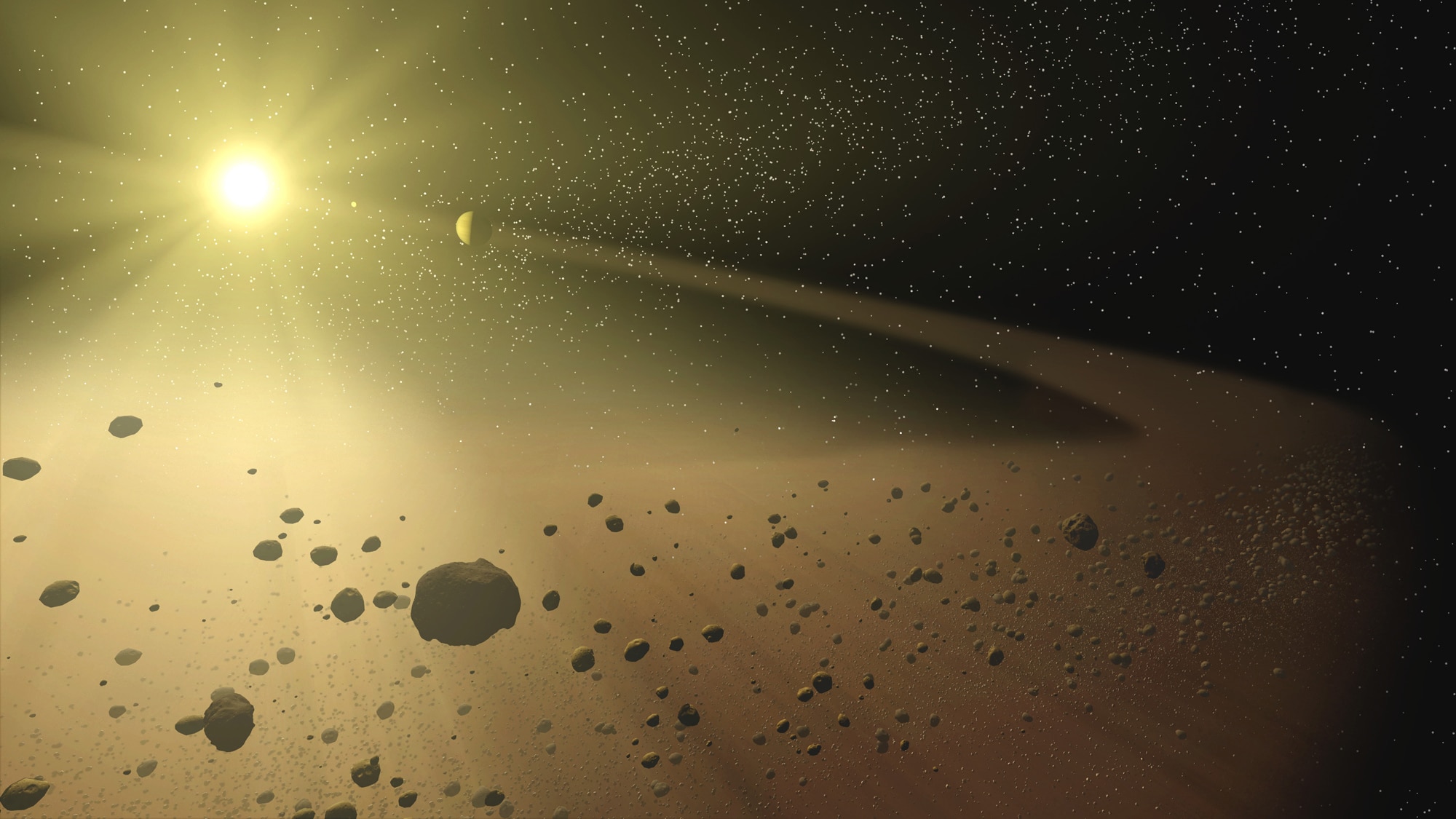
Well, I was hoping for aliens.
Sadly, it's not to be: New observations of Tabby's Star show that the weird dips in its light are not from gigantic megastructures being built by advanced aliens to power their space-based civilization.
Instead, it's most likely dust. But don't despair! There's still plenty of mystery to be had here. Like: Where is this dust coming from? The contenders are, um, all over the place. Hang tight, and I'll get to that
OK, here's the scoop: Tabby's Star, aka KIC 8462852, is a star about 1,300 light years away. It's an F3 main sequence star, which means it's a stable star fusing hydrogen into helium in its core. It's more massive, bigger, and hotter than the Sun, and its luminosity (the amount of energy it emits) is about 4.7 times the Sun's.
This would all be very humdrum in the galactic news cycle — there are probably a billion or more stars like it in the Milky Way — except for one thing: It undergoes extreme dips in brightness as seen from Earth. Many of these dips are a few percent of the total light, but some are more; in February of 2013 the star dimmed by 22%, which is a lot.
The dips are all different, which is a little bit weird; that rules out one big thing like a planet orbiting it and periodically blocking some of the light. We knew that anyway; it would take a huge object to block 22% of the star, something half the size of the star itself! That would make the object a star unto itself, and we see no evidence of such a thing.
One idea was that a family of comets (technically, since they orbit another star, they'd be exocomets) is orbiting Tabby's Star, and are breaking apart. The expanding dust cloud would then be creating the dips. However, it's hard to see how they could block so much light either.
What's really needed are observations of the star made in different colors, to see if there's any wavelength dependency on the dips. That would tell us a lot about what's causing them. The dips were discovered in Kepler Space Telescope data, designed to look for periodic drops in starlight due to planets orbiting other stars. While the Kepler observations were very accurate, they were monochromatic, in just one color.
Because of that, astronomer Tabetha Boyajian (after whom the star is nicknamed) decided to keep tabs (ha ha) on the star, and, when it started showing big dips again, train as many telescopes of different kinds on the star as possible. A crowdfunded Kickstarter effort raised the money needed, and when the star started misbehaving again in 2017, a huge team of astronomers was ready.
A fleet of telescopes began observing Tabby's Star, and over the course of the next few months four major dips were seen. These were given nicknames — people who contributed to the Kickstarter were able to nominate and vote for names to make them easier to distinguish. This part is fun…
The first dip, nicknamed Elsie (a pun on LC, for “light curve”, what astronomers call the graph of brightness over time for an object), occurred in May 2017. The star dropped in light by about 1-2%, and the dip lasted for roughly a week. The light dropped rapidly then climbed back up more slowly.
The second was named Celeste — a more layered pun, so follow along: This dip was the mirror of Elsie, dropping slowly and rising rapidly, so they reversed the letters to get CL… which can be pronounced as ciel, the French word for sky. Celeste is the Latin term for sky from which ciel is derived. I tip my dew shield to them for coming up with this convoluted name! Anyway, Celeste happened in June 2017, and lasted for roughly two weeks.
The third is Skara Brae, named after a lost city in Scotland. It occurred in late July/early August 2017 and lasted about three weeks. In the middle there was a sudden deeper plunge in light, fading the starlight by about 2%. This lasted for less than 7 hours! Similar sharp drops had been seen in Kepler observations.
The fourth dip is Angkor, named after another lost city. It was also a couple of weeks long, and happened in September 2017. Interestingly, after Angkor ended, the star actually returned to a brightness higher than before the dips started, increasing about 1% over average and slowly fading over the next couple of months.
Lots of telescopes observed Tabby's Star during these events, but there were two observations that were key. One was made using different filters, seeing blue, red, and near infrared light. What they found was critical: the star got dimmer in blue light than it did in red!
Why is this important? If the object blocking the star were solid and opaque — say, a gigantic alien-built solar panel — then the light should drop across all colors equally. They didn't.
So I'm not saying aliens, because it's not aliens. Nuts.
However, this type of color-dependent drop is well known among astronomers when an object is blocked by clouds of dust. This comes in many forms, but is usually made up of rocky/metallic grains or carbon based molecules that are essentially soot. Dust is everywhere in the Universe, and can be produced when objects like comets or asteroids disintegrate or collide. The tails of comets can be very dusty, and we also see clouds of dust surrounding them if they have an outburst of material blowing off them.
A translucent (what astronomers call “optically thin”) cloud of dust like this blocks blue light better than red, which would explain why the star appeared to dim more in the blue filter observations. Not only that, but by comparing the dips in the colors, the astronomers determined that the dust grains were smaller than about a micron in size (a millionth of a meter, which is pretty small: a human hair is about 100 microns wide.
That's very interesting. There is some evidence that this material is relatively close in to the star, perhaps on an elliptical orbit. Grains of dust this small won't last long that close in; the light from the star is so intense it blows small grains away pretty rapidly. That means that this dust must have been created recently, astronomically speaking. Maybe even in human terms. Whatever created these grains may have occurred just years ago!
So what event might have done this? Some ideas are somewhat more mundane, based on things we've seen in our own solar system. A bunch of comets slowly falling apart, say, or a collision. But maybe it was something bigger…
Some sort of large-scale catastrophe could be back on the table as an explanation for all this. It's possible that two planet-sized objects orbiting Tabby's Star collided! If that happened then you'd get a huge cloud of dust. It could be clumpy, and could very well orbit the star on an ellipse. As these clumps of material pass in front of the star, we see dips.
This could also explain another weird thing about the star: It appears to be dimming slowly over timescales of centuries, too. This is what we call a secular trend, and it could be due to larger grains of dust spreading out in a ring from an earlier catastrophe, something that happened long ago. I'm scratching my head over this, though: It seems like you'd need a separate collision for this, long ago, then a more recent one to explain the smaller grains. Maybe two chunks from the first collision later collided? That's not too fanciful an idea; the clumps could be close enough together that more collisions would occur.
I'll note that the spectrum of the star did not change at all during these dips, which means that the physical properties of the star itself were constant. It's possibly that a cool spot, like a giant starspot, could be causing these dips as well, though the evidence supporting that from these recent observations is marginal. Other observations showed nothing out of the ordinary as well (including a search for narrow-band radio signals an alien might send; that was undertaken by the good folks at SETI, who didn't find anything either).
Very long wavelength infrared observations were made using the NEOWISE infrared satellite, and weirdly they saw no change in brightness at all. I'd expect the star to brighten at those wavelengths if some event created a lot of warm dust; NEOWISE is very good at seeing that sort of thing. So that's pretty peculiar. However, this did provide for a lovely pun that made it in to the paper:
Ha! I'm surprised — and pleased — the journal editors let that through.
I'd be remiss if I didn't point out that one of the authors on the new paper, Jason Wright, has been blogging about some plausible ideas to explain all this, some of which seem pretty far out at first glance, but are supported by the numbers. For example, these dips could be caused by… a black hole! Actually, not the black hole itself, but a disk of material around it (read hypothesis #5 at that link; #6 is pretty much ruled out by the new observations). These are common in our galaxy, but the odds of one lining up to get between us and a nearby star is pretty low. But then, we've never seen a star act like this one, so whatever is causing it must be something rare!
I'd rate that as unlikely, but at this point it's still worth keeping an open mind.
Even given that, it does look like dust is the most likely culprit here, and not aliens*. Still, there are lots of details that need filling in. If some sort of collision or massive disintegration event is what's behind all this, then it may be periodic, occurring every time this material orbits the star. If so, then the astronomers predict there may be another series of dips starting on or around June 2019. If so, then they'll be ready to observe it again.
And this is why I'm not hugely disappointed it's not aliens. I never really thought it was, but as a substitute we get something that's still a mystery, and may be due to massive objects colliding around a star quadrillions of kilometers away!
That's still thrilling. I can't wait for Episode 3. Stay tuned.
*Unless it was an alien megastructure and then another species of aliens came along and blew it up. If this turns out to be the case I'm claiming the movie rights here and now.
